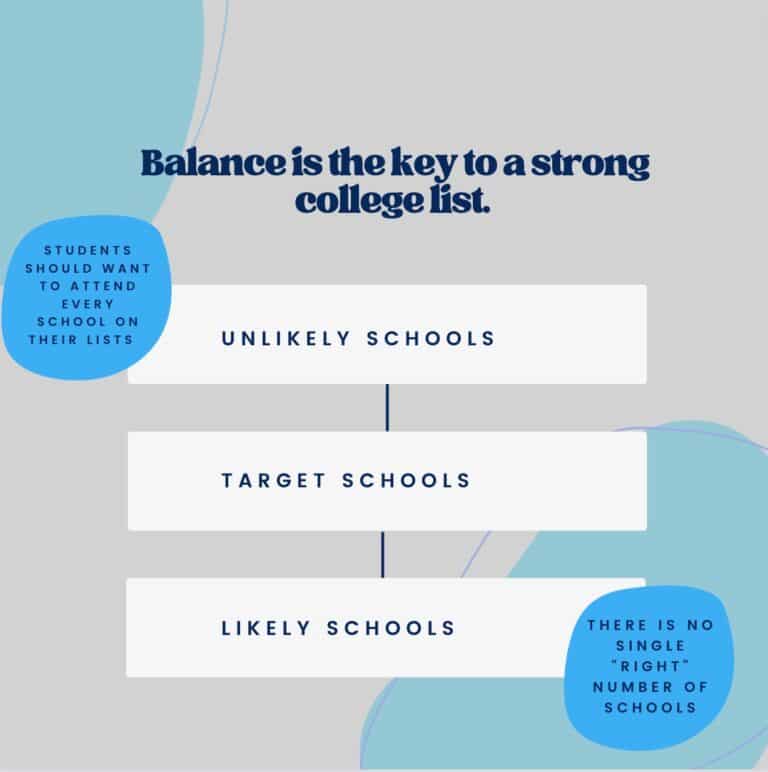Building a College List
Part Two: How Many Schools?

There’s no uniform “right” number of schools on a college list. On rare occasions, we’ve had students apply to as few as two schools (both “likely” schools that offered rolling admission plans). Other students, particularly those pursuing niche majors like musical theatre, may submit upwards of 20 applications. The vast majority of students, however, should strive to include 8-12 schools—ranging from “likely” to “target” to “unlikely”—on their lists.
Where any given student’s list falls within that range often hinges on the selectivity of the colleges relative to the student’s profile. A list heavily populated with “unlikely” schools will typically skew longer, but 12 schools is a reasonable target cap for most students. Statistically speaking, loading a list with highly-selective institutions does not increase a student’s chances of getting into any single university, and applying to college is a nerve-wracking, time-consuming, and expensive proposition.
Conversely, lists primarily composed of “target” and “likely” schools often contain 6-8 schools. It’s typically unnecessary to apply to 5-6 “likely” schools with rolling admission—most students should attempt to identify 2-3 colleges in this category that they would truly like to attend. While an applicant may believe that it’s “easy” to get into a particular school, one student’s “likely” school is another’s “unlikely.” Applying just for the sake of applying clogs the entire system, potentially takes away spots from other applicants, and creates unnecessary work for all involved.
The number of schools on a student’s list may also be impacted by the timing of available admissions decision plans. For example, colleges that offer rolling admissions generally begin issuing decisions relatively early in the admission cycle. If students secure 1-2 early acceptances, they can trim their college lists accordingly. Similarly, students interested in highly-selective schools typically take advantage of Early Decision plans that offer higher acceptance rates. After students choose their 1-2 Early Decision options, they may decide not to apply to universities at which the Regular Decision acceptance rates are in the single digits.
Applying to college is expensive and time-consuming, and overapplying leads to exhaustion and diminishing returns. After all, the eventual goal is to end up at one college, not to compile acceptances (or denials). Fundamentally, every school on a person’s list should be placed there with intention and a focus on fit. Students can and should “reach” for colleges that truly interest them, but there’s also no point in paying an $85 application fee and writing essays for Harvard “just to get the rejection letter.” With application numbers at many colleges exploding, the entire process is more effective and efficient when students apply to a reasonable number of appropriate schools.

